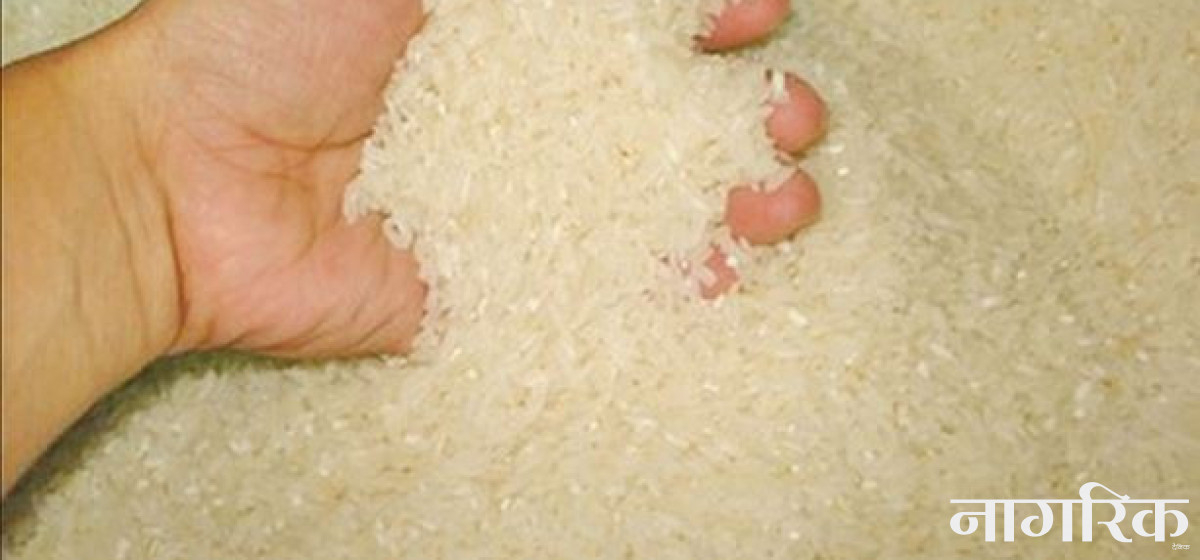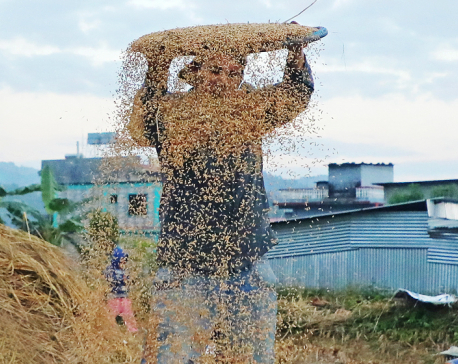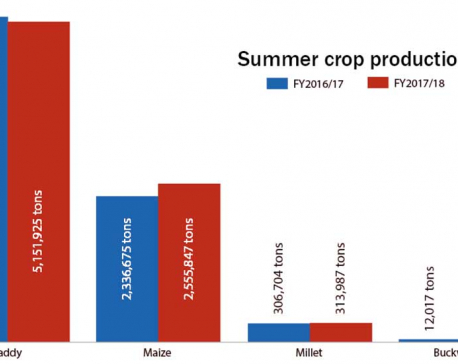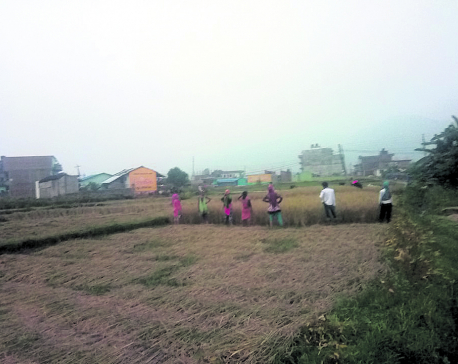
OR
Nepal imported paddy, rice worth over Rs 33.6 billion in 11 months of current FY
Published On: June 30, 2023 07:59 PM NPT By: Dilip Paudel

KATHMANDU, June 30: As the government is planning to become self-sufficient in food by increasing agricultural production, rice and paddy worth over Rs 33.6 billion have been imported in the 11 months of the current fiscal year. According to the customs department, from mid-July to the mid-June of the current fiscal year 2022/23, paddy and rice worth Rs 33.63 billion were imported.
Rice production has not been able to increase as farmers lack advanced varieties of rice seeds, chemical fertilizers when needed, irrigation facilities, machine tools for planting paddy, etc. As the production and productivity of paddy decreased and consumption increased, Nepal had to depend on foreign countries to address the demand of rice. Former agriculture secretary Yogendra Bahadur Karki said that rice is being imported because the production of rice has not increased in Nepal.
“Availability of seeds, irrigation and chemical fertilizers needed by farmers to increase rice production has not been provided on time,” Secretary Karki said, “Rice production and productivity should be increased to replace imports.”
The government is celebrating the 20th National Paddy Day on Friday with the slogan ‘Climate adapted farmer-friendly technology, increase in paddy production’. Even as the National Paddy Day is celebrated every year on Asar 15 of the Nepali calendar (June 30 this year), the country is becoming increasingly dependent on rice.
Nepali consumers are using rice produced in neighboring countries like India, China and America. Medium-grain rice worth about Rs 190 million has been imported from America this year. Similarly, rice is imported to Nepal from Vietnam, Thailand, Bhutan. Nepal, which once exported rice, is now dependent on imports. However, no initiatives have been taken to increase paddy production in the country. Although the government and political leaders have given slogans of agricultural self-sufficiency, it has not been seen in practice.
Production has not increased due to the lack of modernization, mechanization and commercialization in agriculture. Although six metric tons of paddy per hectare is grown abroad, not even four metric tons per hectare is produced in Nepal. At present, only 3.8 metric tons of paddy per hectare is grown in Nepal. Currently, rice is cultivated in an area of about 1.5 million hectares across the country. Former secretary Karki said that 6.4 million metric tons of paddy should be grown to stop rice imports.
According to him, the productivity of rice should be increased to four metric tons per hectare, rice should be cultivated in 1.6 million hectares including spring paddy, and irrigation facilities should be increased from 35 percent to 55 percent. “Farmers should be provided with advanced varieties of seeds and chemical fertilizers on time,” said Karki, “An effective plan should be made to increase production."
Hari Bahadur KC, director general of the Department of Agriculture said that Nepal is importing rice due to low productivity. He argues that imports of rice have also increased due to the practice of eating rice twice in the mountains and hills. “Medium-grain rice is imported from abroad,” Director General KC said, “We are working to formulate an effective plan to increase production.”
KC said that to increase the production, they are encouraging the cultivation of hybrid paddy, expanding irrigation facilities, regular supply of fertilizers, and spring paddy cultivation. “We have also conducted a paddy mission program,” KC said, “We have encouraged paddy cultivation to increase production.”
To increase production, work is being carried out to develop high yielding rice varieties from Nepal Agricultural Research Council (NARC) along with increment in distribution of subsidy of chemical fertilizers. According to the department, the minimum procurement price of paddy has been determined and purchased and subsidy on machinery tools has also been provided. Officials of the Ministry of Agriculture say that rice import has increased due to Nepalis’ habit of eating decent meals.
Production has not increased also because of the traditional farming system. Even now, paddy cultivation is traditional, subsistence oriented and non-commercial. Paddy experts say that productivity has not increased due to the lack of irrigation, fertilizers and quality seeds, low quality seed replacement rate, low organic matter in the soil and poor fertility and lack of balanced fertilizers.
Even now, farmers have used four-and-a-half-decade-old paddy seeds. About 85 percent of farmers are using old paddy seeds. Although the production will increase by 15 to 20 percent by introducing advanced varieties of paddy seeds, the farmers have not been able to get the seeds of advanced varieties.
In the last financial year, 5.1 million metric tons of paddy was produced. Last year, unseasonal rains damaged 424,000 tons of paddy planted in 111,609 hectares across the country. In the financial year 2020/21, 5.6 million metric tons of paddy was produced.
You May Like This

Paddy output needs to be increased to boost economy: Agriculture Minister Bhusal
PATAN, June 30: Minister for Agriculture and Livestock Development, Dr Beduram Bhusal has underscored the need for promoting paddy production... Read More...

Paddy production down by 1.5% to 5.15 million tons
KATHMANDU, Jan 18: Production of paddy dropped slightly, while maize production climbed to an all-time high in Fiscal Year 2017/18, according... Read More...

Paddy production in Sindhuli to go up 10%: DADO
District Agriculture Development Office (DADO) Sindhuli has estimated 10 percent growth in paddy production in the district this year compared... Read More...










Just In
- Heavy rainfall likely in Bagmati and Sudurpaschim provinces
- Bangladesh protest leaders taken from hospital by police
- Challenges Confronting the New Coalition
- NRB introduces cautiously flexible measures to address ongoing slowdown in various economic sectors
- Forced Covid-19 cremations: is it too late for redemption?
- NRB to provide collateral-free loans to foreign employment seekers
- NEB to publish Grade 12 results next week
- Body handover begins; Relatives remain dissatisfied with insurance, compensation amount







Leave A Comment